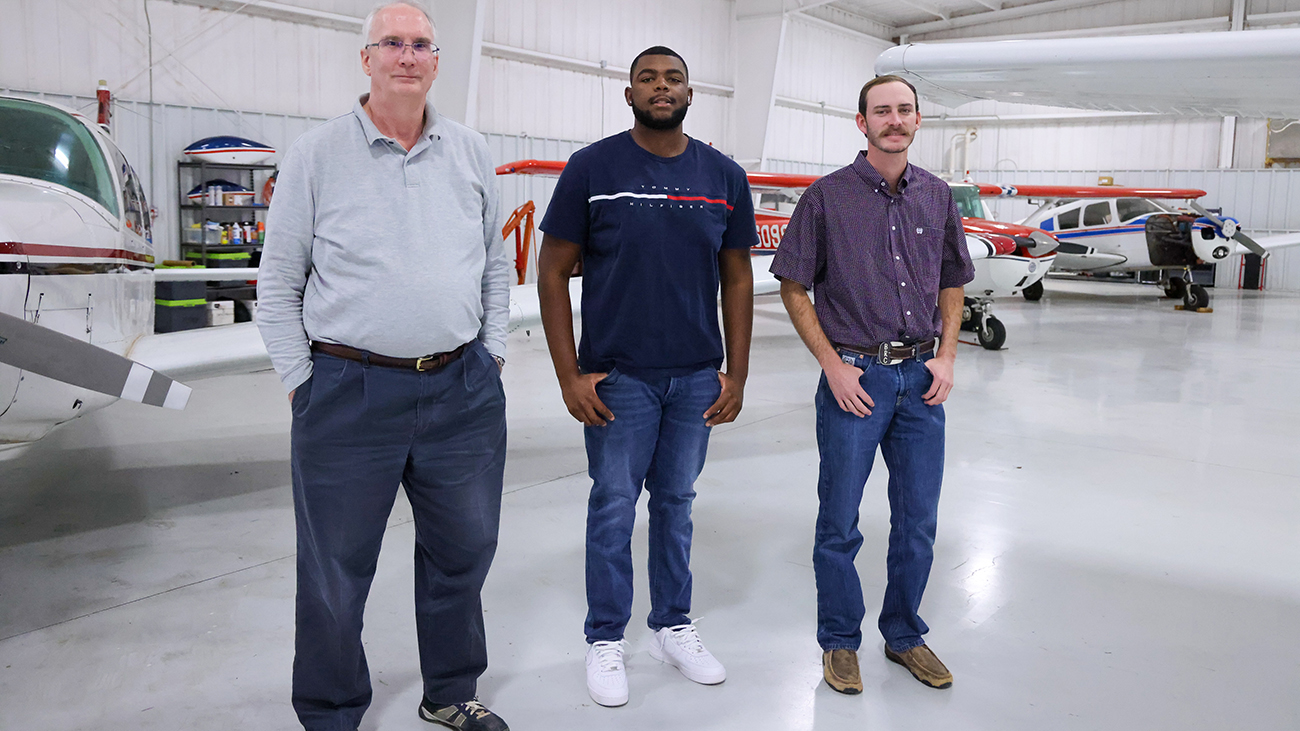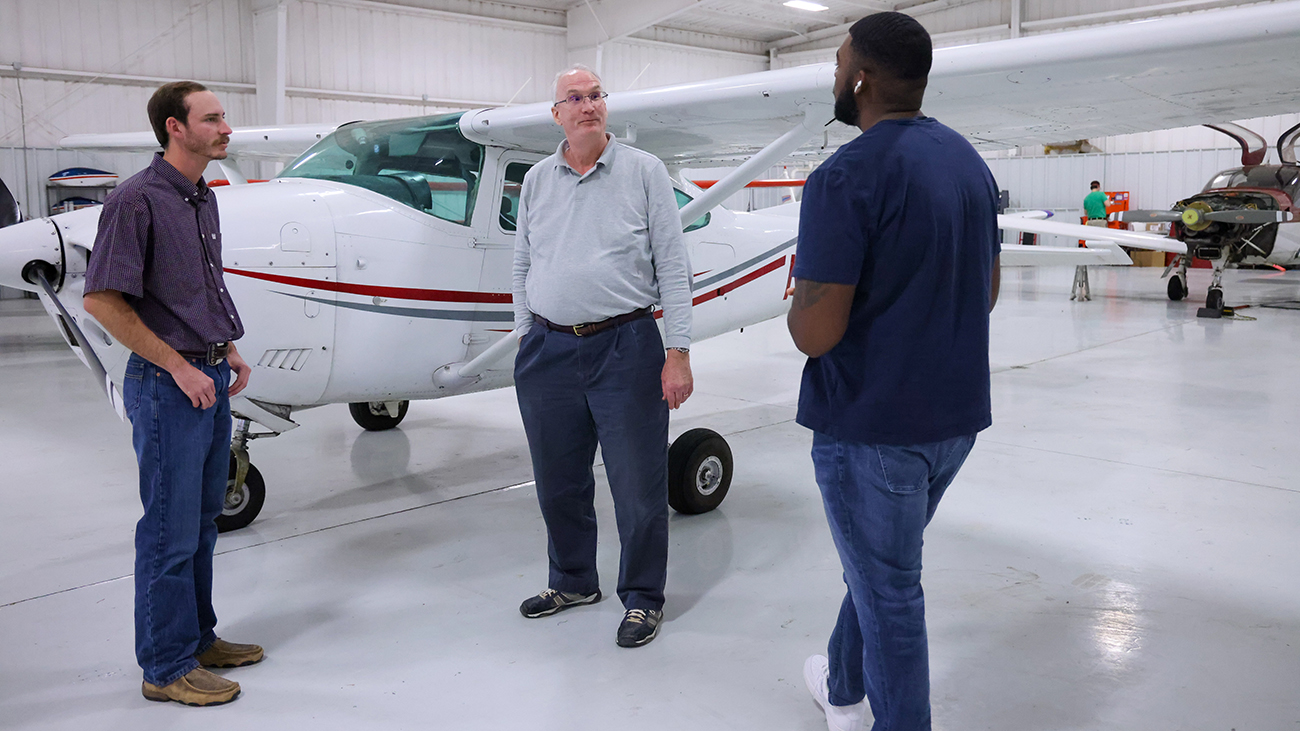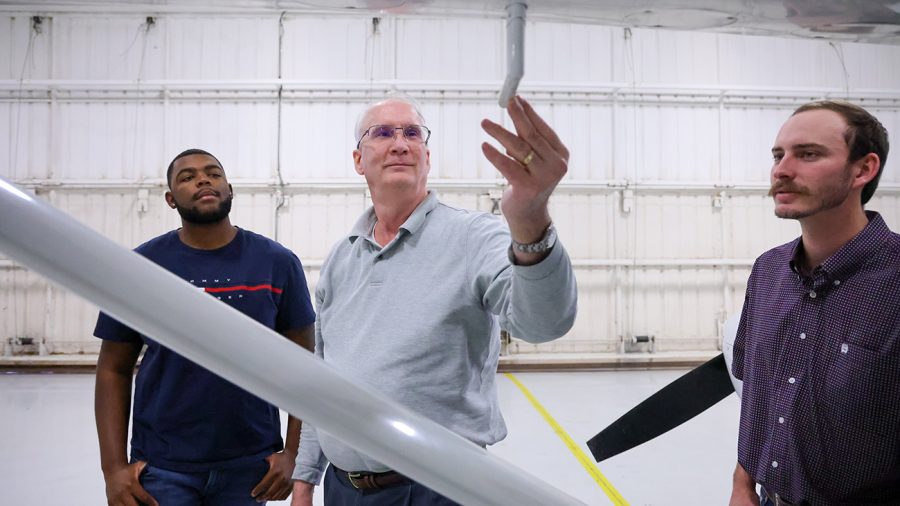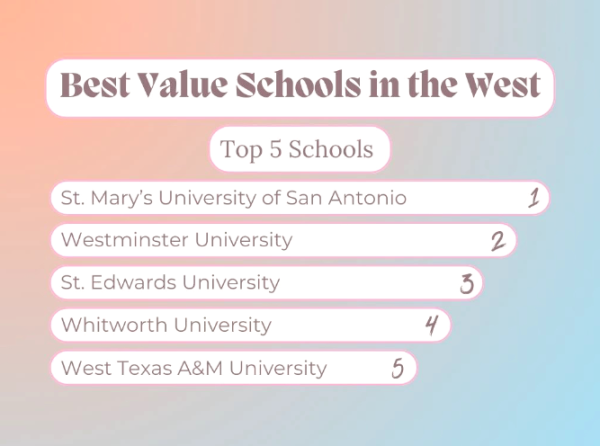Jon Mark Beilue: The great escape — at 8,000 feet History professor Paul Clark also has classroom in a cockpit
Dr. Tom Hickman, a retired local OB-GYN, planted the seed into West Texas A&M University history professor Dr. Paul Clark.
“I call him ‘The Grand Duke of Aviation,’ and he pulled me aside one day,” Clark said. “He said, ‘Look, Clark, there are a lot of good stick-and-rudder guys out there, but not many who are instructors who are good stick-and-rudder guys. I’d like for you to consider being certified flight instructor.”
It’s not just to say Clark never had any interest, just never really considered it. Now a respected pilot was asking him to consider it.
“I thought, well, maybe I could give it a try,” Clark said.
That was in 2018. About a year ago, Branson Cruse, who graduated Dec. 10 from WT with a degree in ag business and economics, saw a flyer on flight instruction in the Engineering Building. In March, Brandon Nelson saw that same flyer in Old Main.
It was a temptation for two students with an itch to fly that was too great to ignore.
Their instructor is surely the only one in the country who is a tenured university professor whose emphasis is East Asian studies.
“He is very knowledgeable, very knowledgeable,” said Nelson, who earned his pilot’s license is about seven months. “He’s like the perfect instructor. That’s why I learned so much so fast.”
Clark started flying when he was a student at Baylor in the 1980s, and then, as he said, “I got poor.” He got busy, too — or busier.
After graduation from Baylor, Clark spent two years as a journeyman missionary in Japan. He then returned to the United States, earning his master’s at the University of Kansas and a doctorate in East Asian studies at the University of Pittsburgh, places he also taught.
Clark arrived at WT in 2001 along with his wife, Dr. Elizabeth Clark, a history professor whose emphasis is Russia and East Central Europe. Paul Clark long ago thought his flying days were behind him, the pursuit of a younger man who had more time and less obligations.
A few years after his mother’s death in 2008, his father was going through some old items and found Clark’s old flight log book. It had been 25 years since he had flown, but he was getting the urge to take it up again. The markings in the log book provided sufficient motivation.
He got back in the cockpit and earned one rating after another, including his instrument rating. Clark’s goal, he said, was to be safe and experienced enough to put his family in a plane with him. Clark never thought about teaching flying until his conversation with Hickman.
Clark has owned his own plane for the last five years, the iconic V-Tail Bonanza. He has taught in Cessnas, Pipers and Beechcraft planes. For Clark, as with most private pilots, flying becomes an escape from the workaday world, leaving all of that behind at several thousand feet.
‘It engages you completely’
 Photo: Dr. Paul Clark poses at Amarillo’s River Falls Airport with students Brandon Nelson, center, and Branson Cruse.
Photo: Dr. Paul Clark poses at Amarillo’s River Falls Airport with students Brandon Nelson, center, and Branson Cruse.
“As I got older as a professor, I’m more than the job that I do,” he said. “In my career, the stakes at times have been all-consuming. At least in my case, I see myself as more than my job. There’s always the next lecture and the next book.
“One of the ways I get my mind off that is to go flying. There’s more to life. Flying has taken me away from that and given me something else to do. It’s the idea you’re above the earth and manipulating the controls, and it’s like the saying, ‘Slipping the surly bonds of earth.’
“The phrase I would use is flying makes you engage both your intellect and your body. To be a good pilot, you have to have the ability to know where you are in the air, know what your plan is before you put your wheels down. At the same time, there is this knowledge that is required. It engages you completely. Because of the demands of flying, you can’t be thinking about anything else.”
Clark, who earned his instructor’s license in 2021, began piecing together some students to instruct about 15 months ago. One of his first students finished earning his license this summer at age 68.
Clark, who also flies for the Civil Air Patrol, is a member of a flying club, the West Texas Flyers. Students will often rent a plane, though occasionally they will have their own or use a family member’s. Clarks instructs out of River Falls and Trade Winds airports.
Clark, who also has taught a ground school class at WT, flies on average two times a week with students if the weather cooperates. Since his flight instruction takes place after his WT classes, the shorter winter days also make it challenge to get hours in, though in the summer he can fly as late as 9 p.m.
“I’m thinking about how to describe him – he’s a good instructor who has this quiet sense of humor,” said Cruse, who has been trained in uncle’s Cessna 182. “If you’re doing something not exactly right or not sure what to do, he’ll give me a little smile. He knows if you’re trying to ‘BS’ him.
“He knows what it’s like. He has kids. It’s not harsh or anything like that, but more like, ‘I don’t know about that.’”
Nelson and Cruse are two of three students that Clark instructs at one time, and the only two WT students currently. Nelson, a sophomore finance major from McKinney who came to WT initially to play football, had his first lesson on March 6. He got his license on Oct. 18, which is about half the time it normally takes.
“Flying has been in me since I was a little kid, to be honest,” Nelson said. “Once I got a taste of it, there was no looking back.”
Classroom, cockpit teaching different and similar
 Photo: Students Branson Cruse, left, and Brandon Nelson, right, prepare for a lesson at River Falls Airport with Dr. Paul Clark, a WT history professor who teaches flight lessons in his spare time.
Photo: Students Branson Cruse, left, and Brandon Nelson, right, prepare for a lesson at River Falls Airport with Dr. Paul Clark, a WT history professor who teaches flight lessons in his spare time.
Nelson has trained in a Cessna 182. With 55 flying hours currently, Nelson is working on his instrument rating. Both Nelson and Cruse have fast-tracked their way to a pilot’s license.
“There’s an old saying in aviation – ‘if you got the time, you don’t have the money, and if you have the money, you don’t have the time,’” Clark said. “So much depends upon the student. A year is a fair length of time, but these guys, they got the flying bug bad. They’d fly every day if they could.”
The difference in teaching in the traditional discipline of the classroom and teaching in a cockpit at 10,000 feet should be obvious. The student in the seat next to Clark is hanging on every word. One student among many in a classroom? Maybe not.
“You have to show them and you have to do it right more or less every time,” Clark said. “If you mess up, they’re going to know it. A historian in East Asian studies can say something in class, and no one for sure knows if that is right or not.”
There are similarities too — feelings a professor and instructor see in a raw student who eventually aces a final or solos flawlessly.
Clark had one flying student who struggled initially to taxi the plane. He could not control the nose. For one lesson, all they did was put the plane’s nose on the center line and taxi back and forth.
“You go from that to, in his case six months later, getting his private pilot’s license,” Clark said. “He’s just a natural pilot and quite capable. So, you go from that to where he is now, and it’s quite a feat.”
Clark doesn’t tell students ahead of time when they will likely solo for the first time. It usually happens as part of a particular lesson. For Nelson, it was May 19. Cruse’s first solo was in August. They could hear Clark’s voice through the radio, not next to them.
“To watch students progress over a period of time,” Clark said, “to go from knowing virtually nothing to being a proficient and capable pilot, it’s a remarkable thing.”
Top photo: Dr. Paul Clark, center, looks closely at an airplane wing with flight students Brandon Nelson, left, and Branson Cruse, right. Clark teaches flight lessons as a sideline to his career as a history professor at West Texas A&M University.
Do you know of a student, faculty member, project, an alumnus or any other story idea for “WT: The Heart and Soul of the Texas Panhandle?” If so, email Jon Mark Beilue at [email protected] .








